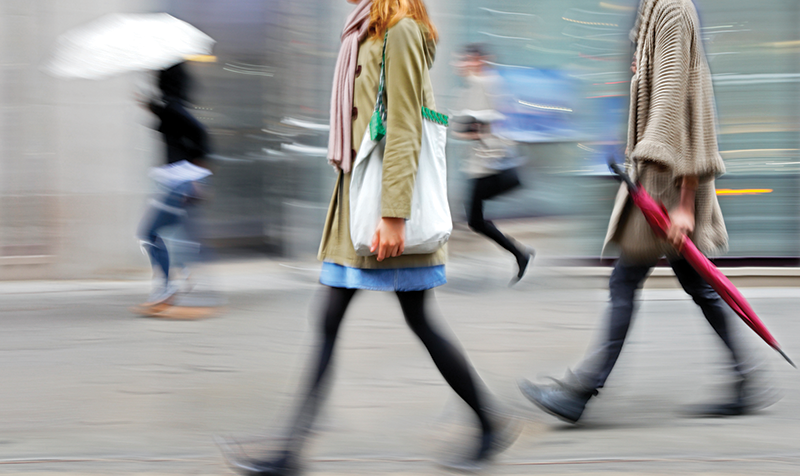- How can better coordination between land use and transportation be achieved?
- What are the key transport and movement issues affecting residents, workers and visitors?
- What interventions could be introduced to alleviate traffic congestion in our bigger towns at peak times and school drop off / pick up times?
- How can we create more successful streets that easily facilitate the needs of vehicles, cyclists and pedestrians?
- What public transport infrastructure measures are required to achieve more sustainable travel patterns? • How can we maximise and make best use of existing capacity in our road and rail system?
- What other measures do you think could support the reduction in CO2 emissions?
- Do you think that parking standards for new developments should reflect the need to reduce car dependency?
Movement and Transport
Movement and transport policy will seek to implement national and regional policy regarding all modes of transport including pedestrian, cyclist, public transport and the private car.

Land Use and Transportation
Co-ordination of transport and land use planning plays a central role in the sustainable development of the local economy. Where and how we build our residential and work environments and supporting transport infrastructure including roads, footpaths, cycle ways, buses and rail infrastructure impacts, on the creation of sustainable communities, climate change and quality of life considerations. It is essential to have an efficient strategic transport system integrated with appropriate use of land to support the sustainable economic, social and physical development of the county.
Public Transport
One of the key elements of the transportation policy for County Carlow will seek to create more sustainable traffic movements with less car dependency as advocated by policy at a national and regional level. Despite Carlow being situated on the main Waterford-Dublin rail network, only a very small proportion of the county commuters use public transport. Travel-to-work patterns indicate persistently high reliance on private cars. This pattern has the potential to create long term social and environmental problems including increased emissions, reduction in competitiveness and reduction in quality of life. Outside the main urban centres communities are poorly serviced by public transport and the dispersal of employment means that for many, the private car is the only convenient or practical means of transport to work.
The provision of the Carlow Town Bus Service will improve sustainable travel patterns within the town area. The detailed design of bus stops and associated infrastructure together with the rail access study to facilitate improved accessibility to the railway station are currently being progressed. The provision of appropriate transportation infrastructure including road and rail infrastructure with an appropriate level of services together with other public transport projects must be integrated with a sustainable settlement strategy.
Local Links
Local Link Carlow provides Demand Responsive Transport (DRT) services for passengers living in rural areas across County Carlow. It is funded through the National Transport Authority (NTA) with funding from the Department of Transport, Tourism and Sport and the Department of Social Protection. Local Link seeks to provide a quality nationwide community based public transport system in rural Ireland which responds to local needs. The key priorities include addressing rural social exclusion and the integration of rural transport services with other public transport services. The NTA in conjunction with Local Link offices will continue to identify improvements in existing services and develop appropriate new routes based on the availability of resources. Greater integration with existing public transport services between towns / villages will also continue to be a key focus of the Programme.
Roads
The provision of a safe and efficient road system is required to facilitate the development of the economy and to protect road users. Carlow currently comprises over 1,214km of roads; The M9 Motorway and the National Road Network (N80 / N81) are strategically important for the county and for the safe and efficient movement of long distance traffic. In addition to maintenance and upkeep of the national, regional and local network, specific roads projects which are currently being advanced include the upgrade of the N80 National Road east of Castletown Cross Roads extending to Graiguenaspidogue Cross and completion of the Carlow Relief Road Scheme (CRR). The CRR road will extend from the already constructed portion of roadway located at the Junction with the R726 (Hacketstown Road) orbiting Carlow Town (to the south crossing the N80, the Railway line, the R448, the River Barrow, the local and regional road network) and joining with the already constructed portion in Co. Laois. The proposed Relief Road project is currently subject to appraisal under National Strategic Outcome 3 of “Project Ireland 2040 – National Development Plan 2018-2027."
New or upgraded roads and streets in Carlow require compliance with standards as contained in the Design Manual for Urban Roads and Streets (DMURS). In this regard, greater priority shall be given to accommodating the needs of pedestrians, cyclists and public transport. The manual places new emphasis on creating a “sense of place” and provides a range of design measures to control vehicular speeds.


Walking and Cycling
Walking and cycling have the lowest environmental impact of all travel modes, however in County Carlow both these modes of transport play minor roles in contributing to sustainable travel patterns. Walking and cycling networks need to be further developed and should be appropriately designed, continuous and cover large areas of towns with links to longer distance routes. Protecting the alignment of existing walking and cycling routes is imperative if such networks are to achieve maximum usage. The Council will continue to promote and facilitate the development of walking and cycling facilities in the county.
Car Parking
A key consideration in the review of the County Development Plan is to ensure adequate car parking provision while encouraging a changeover to other forms of transport particularly in our bigger urban centres. In working towards better integration of land use and transportation a review of existing car parking standards will be undertaken.